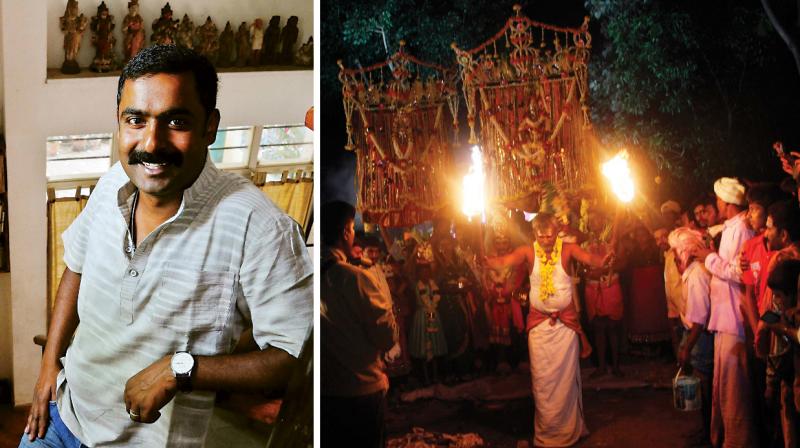Urban legend: Ugadi Life's nothing but neem and jaggery
Ugadi, he recalled, was the one occasion when he and his two siblings were bought new clothes.

Ugadi is celebrated with great pomp and fervour by communities in Karnataka, Telangana and Andhra Pradesh. Many of these ancient traditions are fading away and photographer Cop Shiva is out to chronicle them with his lens, reports Darshana Ramdev
Ugadi, the New Year for communities in Karnataka, Andhra Pradesh and Telegana is a time of feasts, merriment with friends and family and a celebration of life itself. It marks the start of Chaitra, the first month in the Panchanga, the Indian luni-solar calendar.
Preparations begin a week in advance, houses are washed and their doorways are adorned with garlands of mango leaves (this tradition comes from the belief that the sons of Shiva and Parvathi considered it their favourite fruit). Obbatu, a delicacy made from flour, gram and jaggery is usually made and eaten with ghee, milk or coconut milk. The celebrations begin in earnest the next day, Varshada Thodaku, with the traditional non-vegetarian lunch, gambling and great merriment. Mutton curry eaten with idli is the customary meal and it's not unusual for mutton prices to hit Rs 600 per kilo on that day!
Many of these traditions have been watered down over the centuries and DC visited Cop Shiva, a cop-turned-photographer whose most recent exhibition celebrated the festivals of Bengaluru. This we did in the hope of unearthing some photographs of Ugadi being celebrated in the city. He had none. “I go back home to my village. That's where it all happens,” he smiled. "I'm not a religious person per se, but I can't miss this!" Shiva, who hails from a Gowda community in Bannikuppe, a village near Ramnagar, says much has changed since he was a child. "When I was growing up, Ugadi meant pulling out all the stops. Today, most people don't even think to buy something new to wear."
Ugadi, he recalled, was the one occasion when he and his two siblings were bought new clothes. "My mother worked as a coolie to make ends meet and earned about Rs 15 a day. Even so, Ugadi meant new clothes and a trip to city. I come from a village named Bannikuppe and we would travel eight km to the nearest town, Ramnagar, which was always packed. That old world charm no longer exists, everything is packaged and made available in our villages now."
The day begins with the traditional oil bath, a custom followed across many households even today, both urban and rural. The preparations, however, begin a year in advance. "About 20 people pool in money to buy goats, which costs about Rs 15000. The goat is reared through the year and slaughtered for Ugadi," he said. "The slaughter happens on midnight, at the start of the second day of celebrations." The women sit beside large pots, waiting for the meant to be brought to them. This custom has altered slightly over the years and families cook their meals in their own kitchens. "When I was growing up, meat was always cooked outside, near the cow shed. They make mutton curry, which we eat with thatte (plate) idly." Nothing goes to waste - even the spare parts are used for a local delicacy made with raw papaya.
“After that, we all gather outside, the men play cards and the women used to play a game with tamarind seeds.” Most of these traditions have faded away with time, Shiva rued. "Now, most people don't even want to buy new clothes for Ugadi. There's no need for villagers to make that exciting annual trip into town either, everything is packaged and made available to us where we live. The situation is different today, everything is easier to obtain, for starters. It's regrettable, but that's the essence of Ugadi - to taste all of life's offerings, whether they're sweet, sour or bitter.”

